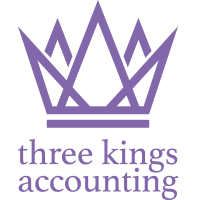A new merged Research and Development (R&D) scheme has been introduced, replacing both the current SME and R&D Expenditure Credit (RDEC) regimes. The changes apply to accounting periods beginning on or after 1 April 2024.
A new set of rules makes aid available to most companies, in the form of a payable credit calculated by reference to expenditure on R&D. A second set of rules makes aid available to SMEs that invest heavily in R&D, in the form of an adjustment of profits or losses for Corporation Tax purposes, calculated by reference to expenditure on R&D and, where that adjustment produces or contributes to a trading loss, a payable credit calculated by reference to that loss.
The new RDEC
The RDEC allows the company to claim a taxable credit of 20% for expenditure incurred on eligible expenditure. As this amount is taxable it is also known as an ‘above the line’ credit. The credit received must be used to settle Corporation Tax liabilities of the current, future or prior periods subject to certain limitations and calculations. Where there is no Corporation Tax due the amount must be used to settle other tax debts and may then be able to be repaid.
There are broadly three categories of qualifying R&D expenditure which may qualify for R&D:
- In-house expenditure – incurred on staffing costs; on software, data licences, cloud computing services or consumable items; is qualifying expenditure on externally provided workers.
- Expenditure attributable to relevant R&D contracted out by the company.
- Expenditure attributable to relevant R&D contracted out to the company broadly by a non-taxpayer.
Relief for loss-making, R&D-intensive SMEs
The existing SME rules are used as the basis for the new relief for companies that are SMEs, invest heavily in R&D and do not make associated trading profits. This provides relief in the form of an additional deduction where the investment is made in the course of a loss-making trade i.e. 186% relief. These rules are amended to add new conditions, namely that:
- The company meets the R&D intensity condition in the period or obtained relief under the R&D-intensive rules for its most recent prior accounting period of 12 months’ duration, having met the R&D intensity condition in that period.
- The company makes a loss in the trade in the period.
Broadly, the company meets the condition if its relevant R&D expenditure for the period amounts to at least 30% of its total relevant expenditure for the period.
Where the conditions are met, a repayable credit of 14.5% may be due but this repayment is subject to a number of detailed restrictions.
The qualifying expenditure brackets mirror the three categories detailed above under the RDEC scheme.
Qualifying projects
R&D relief can only be claimed by companies that have incurred expenditure on qualifying R&D projects that are relevant to the company’s trade. A project should address an area of scientific or technological uncertainty and be innovative. The innovation needs to be an improvement in the overall knowledge in the relevant field of research, not just an advancement for the company.
An important point to appreciate is that the activity does not have to create something completely new from scratch. It could include:
- Developing a product that exists but where there is some technological uncertainty which can be improved.
- Making an appreciable improvement to a product or process e.g. exploring new cost-effective materials which will allow a product to perform better.
Companies should document the uncertainties and planned innovation at the start of a project to provide evidence to support an R&D claim.
Once the company is comfortable that R&D is taking place, then the next step is to identify the activities of the business that relate to the R&D activity.
There are essentially two types of activities:
- those that contribute directly to achieving the advancement
- certain activities that indirectly contribute to achieving the advancement.
Examples of direct activities are:
- scientific or technological planning
- scientific or technological design, testing, and analysis
- activities which design or adapt software, materials or equipment.
Examples of indirect activities are:
- information services e.g. preparation of R&D reports
- indirect supporting services to the R&D project e.g. maintenance, security, clerical
- ancillary services e.g. leasing laboratories and equipment.
Indirect activities all have to be undertaken for the R&D project.
The R&D project begins when the work to resolve the scientific or technological uncertainty starts and ends when that uncertainty is resolved. It is therefore beneficial for companies to keep a timeline of activities and their purposes to detail when the business starts to move into the production phase to optimise their claims.
Claiming relief
If a company has not previously claimed R&D relief, or not claimed within the last three years, then it must notify HMRC within six months of the end of the accounting period in relation to which that R&D is incurred.
In addition, for any company wishing to claim relief, claimants must provide additional information to support a claim before filing the Corporation Tax return. If this information is not supplied the claim will be invalid.
How we can help
As can be seen, the R&D regime is complex. Please contact us to discuss your circumstances if you feel that you are undertaking R&D.


